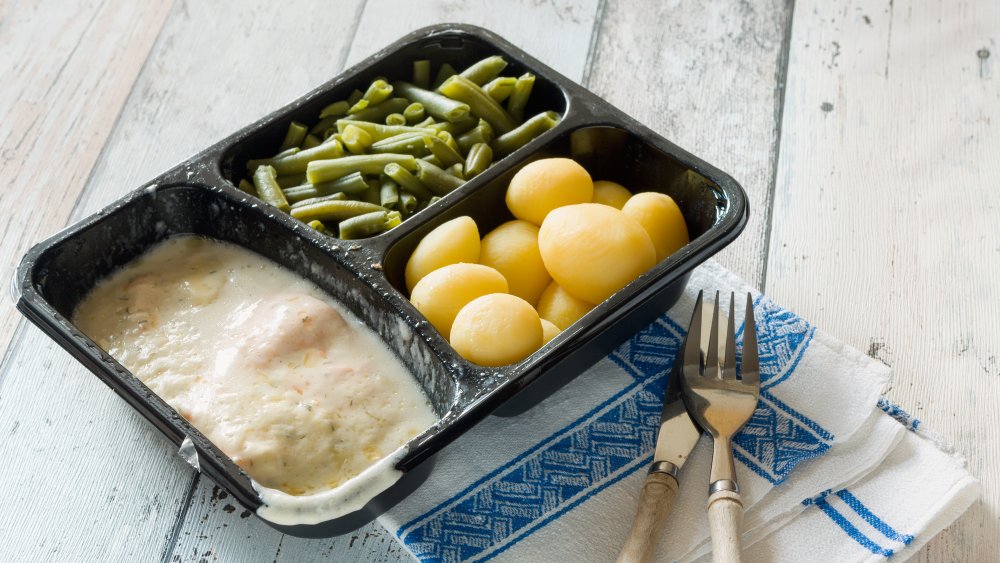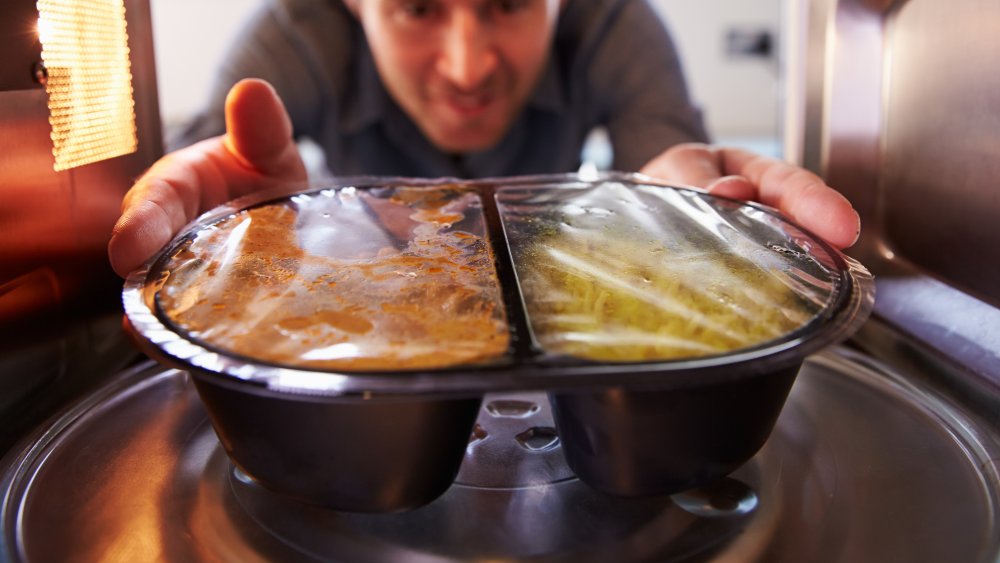The Real Reason So Many Americans Have Stopped Buying TV Dinners
In 2012, the frozen meal industry was worth nearly $9 billion and its products could be found in 99 percent of all American households, according to The Atlantic. That might be shocking to hear, as merely two years later, Nestlé, the parent company of well-established national TV dinner brands Stouffer's and Lean Cuisine, considered getting rid of their frozen meal branch entirely to focus on other, more profitable sectors (via Reuters). At the time, the company had been quietly selling off underperforming businesses in an effort to save money and trim its massive portfolio. Ultimately, this sale never came to be (Nestlé still lists both lines on their website under the frozen food section,) but the mere consideration of the deal represented a serious downward turn in the once favored market.
The Atlantic asserts that the TV dinner's sudden fall from grace can be blamed on a few factors, including a growing interest in healthy eating, poorly-portioned serving sizes, and simple boredom by the American consumer with the most common frozen food options. Another huge factor appears to be that buyers were becoming increasingly concerned with finances. Consumers may have felt they could make the same meal at home for less money using fresh ingredients, and believed that the food would be healthier if they did so.
The rise and fall of the TV dinner
How Stuff Works states that while the technology to create frozen meals was developed in the 1920s, TV dinners didn't really become a thing in the United States until the mid-1950s. The first official TV dinner was produced in 1954, when food brand Swanson sold less turkey during the lead-up to Thanksgiving than anticipated. Searching for a way to offload the excess meat, the company decided to freeze the turkey into individual serving sizes along with peas, cornbread stuffing, and sweet potatoes, and marketed the meals as TV dinners. They sold over 25 million of the pre-cooked, frozen meals that year for less than $1 each, and the industry immediately began to boom.
The year 2008 really marks the beginning of the end of the TV dinner's chokehold on the American culinary landscape, as that was the first time frozen meal sales either fell, or were flat after almost 60 years of continual growth. The Atlantic asserts this might even have been a bit of a numbers trick on the part of the frozen meal industry, as increased prices had made up for some of the dip in individual unit sales numbers.
As time went on, the TV dinner's downward trend in popularity continued. By 2018, the frozen food market was still failing to meet manufacturers' desired growth rates (via Statista).

